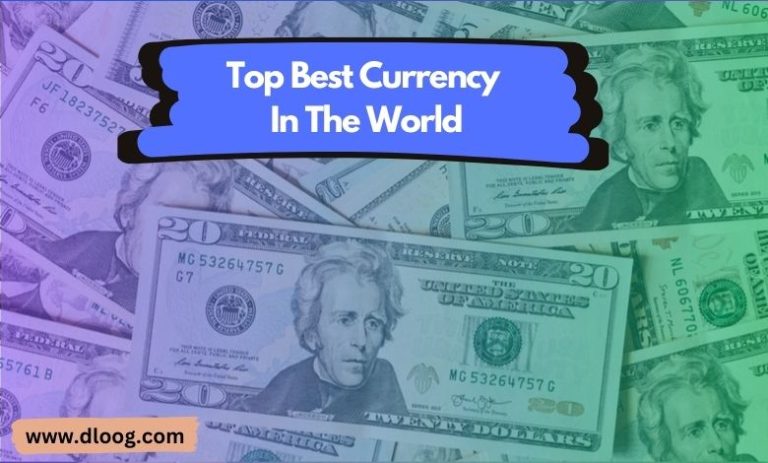Welcome to our latest blog series where we delve into the fascinating world of Best Currency! In this instalment, we’re exploring the cream of the crop, the top best currencies in the world. From iconic bills to historically stable denominations, join us as we journey through the monetary landscape to uncover the currencies that reign supreme in today’s global economy. Whether you’re a seasoned investor, a curious traveller, or simply intrigued by the dynamics of currency valuation, this series promises to offer insight, analysis, and perhaps even a few surprises along the way. So, buckle up as we embark on a currency adventure like no other!
Kuwaiti Dinar

The Kuwaiti Dinar (KWD) is the highest-valued currency in the world. It has been the official currency of Kuwait since 1960 when it replaced the Gulf Rupee. Here are some key details about the Kuwaiti Dinar:
- Symbol: The symbol for the Kuwaiti Dinar is “د.ك” or simply “KD”.
- Subunits: The dinar is divided into 1000 smaller units known as fils. However, due to inflation, fils are not commonly used in everyday transactions.
- Value: The Kuwaiti Dinar is one of the most valuable currencies in the world. Its value is often pegged to a basket of currencies, primarily to the US Dollar (USD), with an exchange rate of approximately 1 KWD to 3.30 USD.
- History: The Kuwaiti Dinar was introduced in 1960, replacing the Gulf Rupee at a rate of 1 dinar = 13.33 rupees. Since then, it has remained a stable currency with high value.
- Design: Kuwaiti Dinar banknotes and coins often feature images of prominent Kuwaiti landmarks, historical figures, and the country’s rich cultural heritage.
- Economic Significance: Kuwait is a major oil-producing country, and its economy heavily relies on oil exports. The stability and high value of the Kuwaiti Dinar are largely influenced by the country’s oil wealth and prudent economic policies.
- International Trade: The Kuwaiti Dinar is widely accepted in international trade and finance, particularly in the oil industry. Its stability makes it an attractive currency for investors and traders.
- Legal Tender: The Kuwaiti Dinar is the sole legal tender in Kuwait, and it is illegal to use any other currency for transactions within the country.
Overall, the Kuwaiti Dinar’s status as the highest-valued currency reflects the economic strength and stability of Kuwait as a nation.
Read About: Top Best Luxurious Hotels All Time In The World
Bahraini Dinar
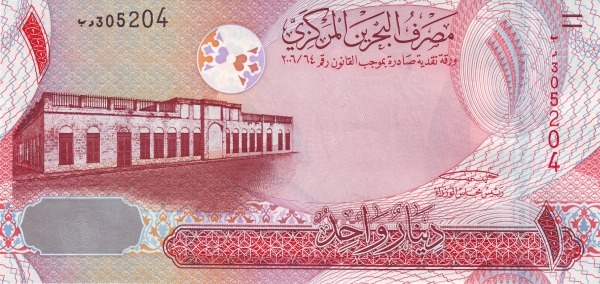
The Bahraini Dinar (BHD) stands tall as one of the most powerful and valuable currencies globally, earning it the status of being one of the top currencies in the world. Its significance extends beyond its monetary value, encompassing historical, economic, and cultural dimensions.
History and Background – Best Currency
The roots of the Bahraini Dinar trace back to 1965 when it replaced the Gulf Rupee at a rate of 10 rupees to 1 dinar. Since then, the currency has undergone various transformations, solidifying its position as a symbol of Bahrain’s economic strength and stability.
Significance and Usage
As the official currency of the Kingdom of Bahrain, the dinar holds immense significance in both domestic and international transactions. It serves as a reliable medium of exchange, unit of account, and store of value, facilitating seamless financial activities within the country and beyond its borders.
Economic Stability
Bahrain’s robust economy, driven primarily by the oil and gas sector, contributes significantly to the stability of the Bahraini Dinar. The prudent fiscal policies and effective monetary measures implemented by the Central Bank of Bahrain further reinforce confidence in the currency, shielding it from volatile market fluctuations.
Exchange Rates
The Bahraini Dinar maintains a strong exchange rate against major world currencies, reflecting its status as a preferred reserve currency. Its stability and high value make it an attractive choice for investors and traders seeking refuge from economic uncertainties elsewhere.
Comparison with Other Currencies
When compared to other currencies, the Bahraini Dinar consistently ranks among the top in terms of value and purchasing power. Its performance often outshines that of currencies from larger and more populous nations, highlighting Bahrain’s economic prowess on the global stage.
Factors Influencing the Dinar’s Value
Several factors influence the value of the Bahraini Dinar, including fluctuations in oil prices, geopolitical developments, monetary policies, and global economic trends. The Central Bank of Bahrain closely monitors these variables to maintain the dinar’s stability and competitiveness.
Notable Features and Security Measures
The Bahraini Dinar boasts several distinctive features and security measures to deter counterfeiting and ensure authenticity. Advanced printing technologies, intricate designs, and embedded security features make it exceptionally difficult to replicate, enhancing trust and confidence among users.
Impact on International Trade
As a key player in the global economy, the Bahraini Dinar plays a crucial role in facilitating international trade and investment. Its widespread acceptance and stability make it a preferred currency for conducting cross-border transactions, fostering economic cooperation and development.
Future Outlook
The future outlook for the Bahraini Dinar remains optimistic, driven by Bahrain’s continued economic diversification efforts and strategic initiatives to promote sustainable growth. As the country embraces digital transformation and innovation, the dinar is poised to maintain its position as a top currency in the world.
Investing in the Bahraini Dinar
Investors seeking to diversify their portfolios and hedge against currency risks often consider investing in the Bahraini Dinar. While fluctuations in exchange rates may present opportunities for profit, it’s essential to conduct thorough research and consult with financial experts before making investment decisions.
Tips for Travellers
For travellers visiting Bahrain, it’s advisable to exchange currency at authorized banks and exchange bureaus to ensure fair rates and authenticity. Carrying a mix of cash and credit cards can provide flexibility, while staying informed about currency regulations and exchange procedures can help avoid inconvenience.
Cultural Significance
Beyond its economic importance, the Bahraini Dinar holds cultural significance as a symbol of national identity and heritage. Its distinctive design elements often feature historical landmarks, cultural motifs, and symbols of Bahraini pride, reflecting the rich tapestry of the country’s heritage.
Challenges and Risks
Despite its strengths, the Bahraini Dinar faces challenges and risks stemming from global economic uncertainties, geopolitical tensions, and domestic socio-political factors. Maintaining vigilance and adaptability is crucial to navigating these challenges and preserving the dinar’s stability and reputation.
Read About: Top Best Horror Movies All Time In The World
Omani Rial – Best Currency
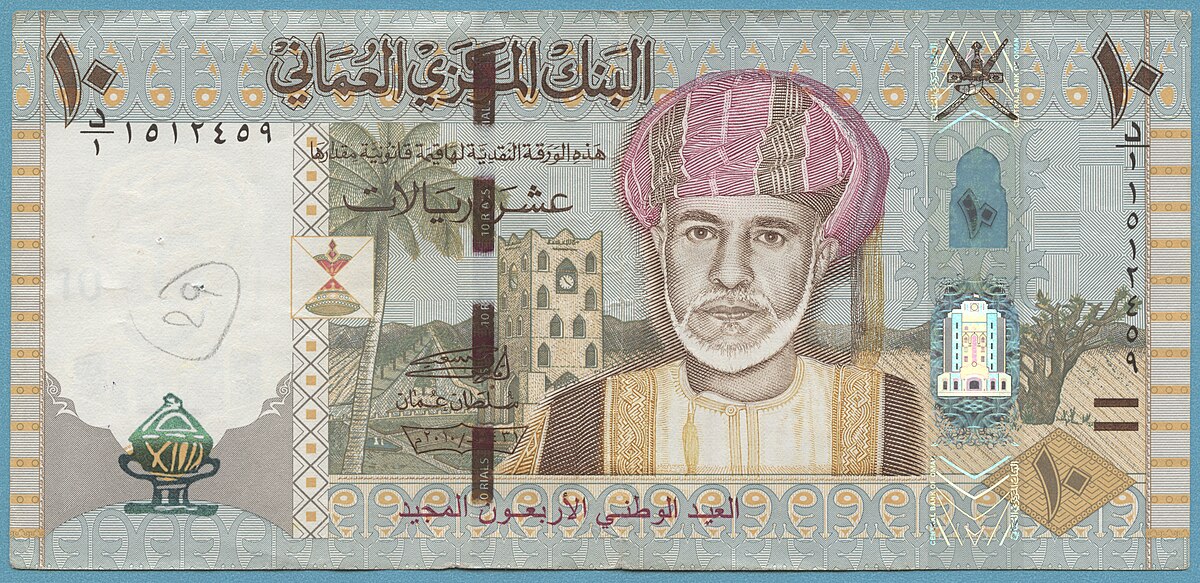
The Omani Rial (OMR) stands out as one of the most esteemed currencies globally, revered for its stability, value, and historical significance. Serving as the official currency of the Sultanate of Oman, the Omani Rial holds a pivotal role in both domestic and international transactions.
Historical Background and Evolution
The history of the Omani Rial dates back centuries, with its roots deeply intertwined with Oman’s rich cultural heritage and maritime legacy. Over time, the currency has undergone several transformations, evolving into its current form as a symbol of Oman’s economic prowess and sovereignty.
Importance and Usage
As the legal tender of Oman, the Omani Rial is widely used for day-to-day transactions, commercial activities, and financial transactions. Its widespread acceptance and stability make it a preferred choice for both businesses and individuals seeking a reliable medium of exchange.
Economic Stability and Factors Influencing Value
Oman’s stable economy, bolstered by its strategic location, natural resources, and prudent fiscal policies, contributes significantly to the stability of the Omani Rial. Various factors, including fluctuations in oil prices, global economic trends, and geopolitical developments, influence the value of the currency.
Exchange Rates and Pegging
The Omani Rial is pegged to the United States Dollar (USD) at a fixed exchange rate, ensuring stability and predictability in international trade and investment. This pegging arrangement, coupled with Oman’s robust economy, enhances confidence in the Omani Rial among investors and traders.
Comparison with Other Currencies
In comparison to other currencies, the Omani Rial consistently ranks among the top in terms of value and purchasing power. Its performance often surpasses that of currencies from larger nations, reflecting Oman’s economic resilience and prudent financial management.
Notable Features and Security Measures
The Omani Rial boasts several distinctive features and security measures designed to prevent counterfeiting and ensure authenticity. Advanced printing techniques, intricate designs, and embedded security features make it exceedingly difficult to replicate, safeguarding the integrity of the currency.
Impact on International Trade and Investment
The Omani Rial plays a pivotal role in facilitating international trade and investment, serving as a trusted medium of exchange in global markets. Its stability and convertibility make it an attractive choice for foreign investors seeking opportunities in Oman’s burgeoning economy.
Future Outlook and Sustainability
Looking ahead, the future outlook for the Omani Rial appears promising, driven by Oman’s continued economic diversification efforts and investments in key sectors such as tourism, logistics, and manufacturing. As Oman embraces digital transformation and innovation, the Omani Rial is poised to maintain its position as a top currency in the world.
Investing in the Omani Rial
Investors keen on diversifying their portfolios and hedging against currency risks often consider investing in the Omani Rial. While fluctuations in exchange rates may present opportunities for profit, it’s essential to conduct thorough research and seek guidance from financial experts before making investment decisions.
Tips for Travellers
For travellers visiting Oman, it’s advisable to exchange currency at authorized banks and exchange bureaus to ensure fair rates and authenticity. Carrying a mix of cash and credit cards can provide flexibility, while familiarizing oneself with local customs and currency denominations can enhance the travel experience.
Cultural Significance
Beyond its economic importance, the Omani Rial holds cultural significance as a symbol of Oman’s rich heritage and tradition. Its design elements often feature motifs inspired by Oman’s natural landscapes, historical landmarks, and cultural symbols, reflecting the nation’s identity and pride.
Challenges and Risks
Despite its strengths, the Omani Rial faces challenges and risks arising from global economic uncertainties, regional instability, and domestic socio-political factors. Adapting to evolving market conditions and implementing sound economic policies is crucial to mitigating risks and preserving the currency’s stability.
Read About: Top Best Cryptocurrencies All Time In The World
Jordanian Dinar
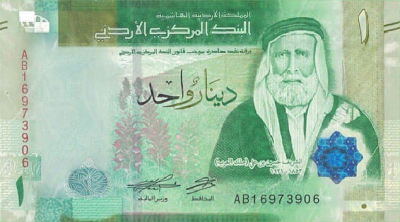
It holds a significant place in the global financial market due to its stability and value.
Historical Background – Best Currency
Initially, it was pegged to the British Pound, but later it switched to the United States Dollar to stabilize its economy.
Currency Symbol and Abbreviation
The symbol used to represent the Jordanian Dinar is JD, and the common abbreviation is JOD. It is divided into smaller units called fils, with 1000 fils making up one dinar.
Jordanian Dinar Denominations
The Jordanian Dinar is available in various denominations, including banknotes and coins. Banknotes come in denominations of 1, 5, 10, 20, and 50 dinars, whereas coins are available in fils.
Exchange Rate and Value
The exchange rate of the Jordanian Dinar fluctuates but is generally stable due to Jordan’s prudent monetary policies. It is one of the strongest currencies in the Middle East and is widely accepted in international markets.
Stability and Monetary Policy
Jordan’s central bank, the Central Bank of Jordan, plays a crucial role in maintaining the stability of the Jordanian Dinar. It implements sound monetary policies to control inflation and ensure economic stability.
Economic Importance
The Jordanian Dinar is vital for Jordan’s economy, facilitating domestic and international trade. Its stability attracts foreign investors, contributing to the country’s economic growth.
International Recognition
Although the Jordanian Dinar is not as widely recognized as major currencies like the US Dollar or Euro, it holds significance in the Middle East and is accepted in many neighboring countries.
Currency Design and Security Features
Jordanian Dinar banknotes feature historical landmarks, iconic figures, and cultural symbols of Jordan.
Jordanian Dinar in Daily Life
In Jordan, the dinar is used for everyday transactions, including shopping, dining, and paying bills. It is readily available at banks and exchange offices throughout the country.
Comparison with Other Currencies
Compared to other currencies in the world, the Jordanian Dinar holds its value well and is considered a strong currency in the Middle East. Its stability makes it an attractive choice for investors and travelers.
Future Outlook
The future of the Jordanian Dinar looks promising, with continued economic growth and stability expected to maintain its status as one of the top currencies in the world.
Read About: Top Best Companies All Time In The World
British Pound – Best Currency

The British Pound (GBP), commonly known as the pound sterling, is the official currency of the United Kingdom (UK) and its territories. It holds a significant position in the global financial market and is one of the oldest currencies still in use today.
Historical Background
The British Pound has a rich history dating back to the 8th century when it was introduced as a silver penny. Over the centuries, it evolved into the pound sterling, becoming the official currency of England in the 17th century and later adopted by the UK.
Currency Symbol and Abbreviation
The symbol used to represent the British Pound is £, and the common abbreviation is GBP. It is divided into smaller units called pence, with 100 pence making up one pound.
British Pound Denominations
The British Pound is available in various denominations, including banknotes and coins. Banknotes come in denominations of £5, £10, £20, and £50, while coins are available in various values ranging from 1 penny to 2 pounds.
Exchange Rate and Value
The exchange rate of the British Pound fluctuates in response to various factors such as economic indicators, political events, and market sentiment. Despite fluctuations, it remains one of the strongest currencies globally, often used as a benchmark in financial markets.
Stability and Monetary Policy
The stability of the British Pound is supported by the Bank of England, the UK’s central bank, which implements monetary policies to control inflation and ensure economic stability. These policies aim to maintain confidence in the currency and promote sustainable economic growth.
Economic Importance
The British Pound plays a crucial role in the UK economy, facilitating domestic and international trade, investment, and financial transactions. Its status as a global reserve currency enhances the UK’s economic standing and influence on the world stage.
International Recognition
The British Pound is widely recognized and accepted around the world, particularly in countries with historical ties to the UK and in international financial markets. It is one of the most traded currencies globally, contributing to its liquidity and stability.
Currency Design and Security Features
British Pound banknotes feature iconic figures, historical landmarks, and cultural symbols of the UK, reflecting the nation’s rich heritage. They also incorporate advanced security features to prevent counterfeiting, ensuring the integrity of the currency.
British Pound in Daily Life
In the UK, the British Pound is used for a wide range of transactions, including shopping, dining, paying bills, and accessing various services. It is readily available at banks, exchange offices, and automated teller machines (ATMs) throughout the country.
Comparison with Other Currencies
Compared to other currencies in the world, the British Pound is considered one of the top currencies in terms of value, stability, and global influence. Its status as a reserve currency and its role in international trade contribute to its prominence in the global financial system.
Future Outlook
The future of the British Pound remains closely tied to the UK’s economic performance, geopolitical developments, and global market trends. Despite uncertainties, its historical resilience and robust financial system position it well for continued stability and growth.
Read About: Top Best Action Movies All Time In The World
Gibraltar Pound

Despite its small geographical size, the Gibraltar Pound holds significance in the global financial market.
Historical Background – Best Currency
The Gibraltar Pound has a unique history dating back to the 19th century when it was introduced as the currency of Gibraltar. It has undergone various changes over the years, closely tied to the territory’s political and economic developments.
Currency Symbol and Abbreviation
The symbol used to represent the Gibraltar Pound is £, similar to the British Pound, reflecting Gibraltar’s status as a British Overseas Territory. The common abbreviation for the Gibraltar Pound is GIP.
Gibraltar Pound Denominations
The Gibraltar Pound is available in various denominations, including banknotes and coins. Banknotes come in denominations of £5, £10, £20, and £50, while coins are available in values ranging from 1 penny to 2 pounds.
Exchange Rate and Value
The exchange rate of the Gibraltar Pound is pegged to the British Pound at par value, meaning one Gibraltar Pound is equivalent to one British Pound. This stable exchange rate provides certainty and ease of trade for businesses and residents in Gibraltar.
Stability and Monetary Policy
The stability of the Gibraltar Pound is supported by its peg to the British Pound and the oversight of the Gibraltar Financial Services Commission. Monetary policies are aligned with those of the UK to maintain stability and promote economic growth.
Economic Importance
The Gibraltar Pound plays a vital role in Gibraltar’s economy, facilitating domestic transactions, tourism, and international trade. Its stability and parity with the British Pound make it a trusted currency for businesses and individuals alike.
International Recognition
While the Gibraltar Pound is primarily used within Gibraltar, it is not widely recognized or accepted outside of the territory. However, it can be exchanged for other currencies at banks and exchange offices in Gibraltar and the UK.
Currency Design and Security Features
Gibraltar Pound banknotes feature iconic landmarks, historical figures, and cultural symbols of Gibraltar, showcasing the territory’s heritage. Advanced security features are incorporated into banknotes to prevent counterfeiting and ensure authenticity.
Gibraltar Pound in Daily Life
In Gibraltar, the Gibraltar Pound is the primary currency used for everyday transactions, including shopping, dining, paying bills, and accessing services. It is readily available at banks, exchange offices, and automated teller machines (ATMs) across the territory.
Comparison with Other Currencies
Compared to major currencies like the US Dollar or Euro, the Gibraltar Pound has limited international recognition and usage. However, its stability and parity with the British Pound make it a reliable currency for residents and businesses in Gibraltar.
Future Outlook
The future of the Gibraltar Pound remains closely tied to Gibraltar’s economic and political developments, as well as its relationship with the UK. Continued stability and prudent monetary policies are essential for maintaining confidence in the currency.
Read About: Top Best Cricket Player All Time In The World
Cayman Island Dollar – Best Currency
The Cayman Islands Dollar (KYD) is the official currency of the Cayman Islands, a British Overseas Territory in the Caribbean Sea. Despite its small size, the Cayman Islands Dollar holds significance in the local economy and financial sector.
Historical Background
The Cayman Islands Dollar was introduced in 1972, replacing the Jamaican Dollar at par value. Since then, it has been the primary currency used in the Cayman Islands for both domestic transactions and international trade.
Currency Symbol and Abbreviation
The symbol used to represent the Cayman Islands Dollar is CI$, and the common abbreviation is KYD. It is divided into smaller units called cents, with 100 cents making up one Cayman Islands Dollar.
Cayman Islands Dollar Denominations
The Cayman Islands Dollar is available in various denominations, including banknotes and coins. Banknotes come in denominations of CI$1, CI$5, CI$10, CI$25, CI$50, and CI$100, while coins are available in values ranging from 1 cent to 1 dollar.
Exchange Rate and Value
The exchange rate of the Cayman Islands Dollar is fixed to the US Dollar at a rate of CI$1 = US$1.20. This stable exchange rate provides certainty and stability for businesses and residents in the Cayman Islands, as well as for tourists visiting the territory.
Stability and Monetary Policy
The stability of the Cayman Islands Dollar is supported by the Cayman Islands Monetary Authority, which oversees monetary policy and regulates the financial sector. Prudent fiscal management and sound economic policies contribute to the currency’s stability.
Economic Importance
The Cayman Islands Dollar plays a crucial role in the economy of the Cayman Islands, facilitating domestic transactions, investment, and financial services. Its stability and fixed exchange rate with the US Dollar make it an attractive currency for businesses and investors.
International Recognition
While the Cayman Islands Dollar is primarily used within the territory, it is not widely recognized or accepted outside of the Cayman Islands. However, it can be exchanged for other currencies at banks and exchange offices within the territory.
Currency Design and Security Features
Cayman Islands Dollar banknotes feature iconic landmarks, marine life, and cultural symbols of the Cayman Islands, reflecting the territory’s natural beauty and heritage. Advanced security features such as holograms and watermarks are incorporated into banknotes to prevent counterfeiting.
Cayman Islands Dollar in Daily Life
In the Cayman Islands, the Cayman Islands Dollar is the primary currency used for everyday transactions, including shopping, dining, paying bills, and accessing services. It is readily available at banks, exchange offices, and automated teller machines (ATMs) across the territory.
Comparison with Other Currencies
Compared to major currencies like the US Dollar or Euro, the Cayman Islands Dollar has limited international recognition and usage. However, its stability and fixed exchange rate with the US Dollar make it a trusted currency for residents and businesses in the Cayman Islands.
Future Outlook
The future of the Cayman Islands Dollar remains closely tied to the territory’s economic and political developments, as well as its relationship with the US. Continued stability and prudent monetary policies are essential for maintaining confidence in the currency.
Read About: Top Best Football Players All Time In The World
Swiss Franc

The Swiss Franc (CHF) stands as a testament to stability, reliability, and economic prowess. As the official currency of Switzerland and Liechtenstein, it holds a paramount position in the global financial realm. Let’s delve into the intricacies of this esteemed currency.
Historical Evolution – Best Currency
The roots of the Swiss Franc trace back to the 19th century when it emerged as the unified currency of Switzerland. It replaced numerous regional currencies, solidifying Switzerland’s financial landscape. Over the decades, the Swiss Franc has weathered economic storms and emerged as a symbol of resilience.
Currency Symbol and Abbreviation
Symbolized by “CHF,” the Swiss Franc is recognized worldwide for its stability and strength. This symbol reflects the essence of Swiss precision and reliability. Additionally, “CHF” serves as the common abbreviation, denoting transactions and financial dealings involving the currency.
Denominations and Design
Swiss Francs are available in a plethora of denominations, encompassing banknotes and coins. Banknotes are issued in values of 10, 20, 50, 100, 200, and 1000 Francs, while coins range from 5 centimes to 5 Francs. Each denomination bears unique designs, featuring Swiss landmarks, cultural motifs, and historical figures.
Economic Significance
The Swiss Franc plays a pivotal role in Switzerland’s robust economy. Renowned for its stability, the currency fosters confidence among investors and businesses. Switzerland’s prudent monetary policies, coupled with its strong financial sector, bolster the Franc’s reputation as a safe-haven currency.
Global Recognition
Beyond Switzerland’s borders, the Swiss Franc commands international recognition. It is widely accepted in global financial markets and esteemed for its reliability. The Franc’s status as a reserve currency underscores its importance in international trade and finance.
Exchange Rate and Value
The exchange rate of the Swiss Franc fluctuates in response to various factors, including economic indicators and market dynamics. Despite fluctuations, the Franc maintains a strong position, often appreciated for its stability and value.
Security Features
Swiss Franc banknotes incorporate advanced security features to thwart counterfeiting attempts. Holograms, watermarks, and intricate designs adorn the banknotes, ensuring authenticity and integrity in financial transactions.
Daily Utilization
In Switzerland, the Swiss Franc is omnipresent in daily life. From retail transactions to financial investments, the Franc permeates various facets of Swiss society. Its widespread acceptance and accessibility contribute to its prominence.
Comparison and Future Outlook
When compared to other currencies, the Swiss Franc stands tall, embodying reliability and resilience. As for the future, Switzerland’s commitment to fiscal prudence and economic stability bodes well for the Franc’s continued success on the global stage.
Read About: Top Best PC Games All Time In The World
Euro – Best Currency
The Euro (EUR) stands as a symbol of unity, stability, and economic strength. As the official currency of the Eurozone, comprising 19 of the 27 European Union member states, it holds unparalleled significance in the global financial landscape. Let’s embark on a journey to explore the intricacies of this esteemed currency.
Historical Genesis
The inception of the Euro traces back to the Maastricht Treaty of 1992, which laid the groundwork for European economic integration. On January 1, 1999, the Euro was introduced as an electronic currency, followed by the issuance of banknotes and coins on January 1, 2002. Since then, the Euro has emerged as a symbol of European unity and cooperation.
Currency Symbol and Abbreviation
Symbolized by “€,” the Euro embodies the spirit of European integration and solidarity. This symbol, synonymous with prosperity and stability, serves as a visual representation of the Eurozone’s economic prowess. Additionally, “EUR” serves as the common abbreviation for the Euro, denoting financial transactions and monetary dealings involving the currency.
Denominations and Design
Euro banknotes and coins come in a myriad of denominations, ranging from €5 to €500 for banknotes and from 1 cent to €2 for coins. Each denomination features unique designs, showcasing prominent European landmarks, architectural marvels, and cultural motifs. The Euro’s diverse range of designs reflects the rich tapestry of European heritage and history.
Economic Significance
The Euro plays a pivotal role in fostering economic integration and stability within the Eurozone. It facilitates seamless trade, investment, and financial transactions across member states, bolstering economic growth and prosperity. Moreover, the Euro’s status as a reserve currency enhances its global significance and recognition.
Global Recognition
Beyond the confines of the Eurozone, the Euro enjoys widespread recognition and acceptance on the international stage. It is one of the most traded currencies in the world, renowned for its liquidity, stability, and reliability. The Euro’s prominence in global financial markets underscores its status as a premier currency.
Exchange Rate and Value
The exchange rate of the Euro fluctuates in response to various factors, including economic indicators, geopolitical events, and market dynamics. Despite fluctuations, the Euro maintains a strong position against other major currencies, reflecting investor confidence and market stability.
Security Features
Euro banknotes incorporate advanced security features to prevent counterfeiting and ensure authenticity. Holograms, watermarks, and microprinting are among the sophisticated security features embedded within Euro banknotes, safeguarding the integrity of the currency and instilling trust among users.
Daily Utilization
In the Eurozone, the Euro is omnipresent in daily life, permeating various facets of society and commerce. From retail transactions to financial investments, the Euro serves as a cornerstone of economic activity within the Eurozone. Its widespread acceptance and utilization underscore its significance as a premier currency.
Comparison and Future Outlook
When compared to other currencies, the Euro stands as a paragon of stability, unity, and economic resilience. As for the future, the Eurozone’s commitment to economic cooperation and integration bodes well for the Euro’s continued success and prominence on the global stage.
Read About: Top Best Rich Man All Time In The World
United States Dollar
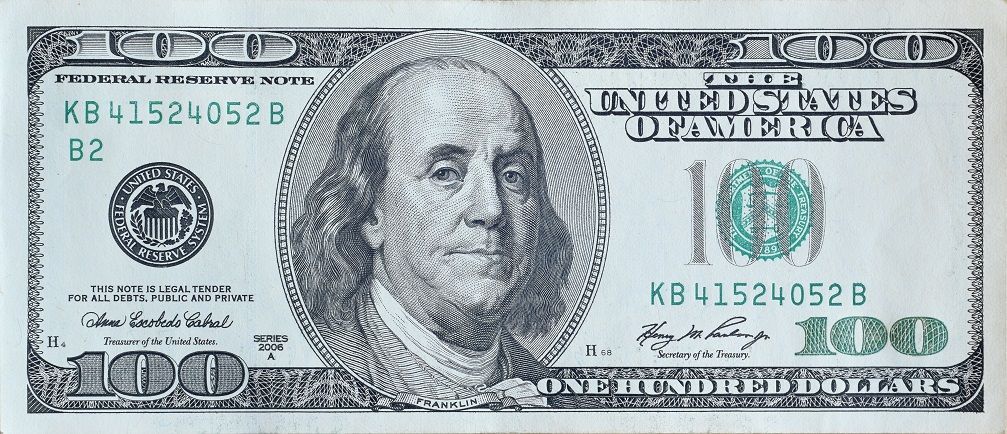
The United States Dollar (USD) reigns supreme as the epitome of financial dominance and stability worldwide. Renowned for its ubiquity and influence, the USD serves as the cornerstone of global trade, investment, and economic transactions. Let’s embark on a journey to unravel the intricacies of this illustrious currency.
Historical Evolution – Best Currency
The roots of the United States Dollar can be traced back to the late 18th century when it was established as the official currency of the newly formed United States. Over the centuries, the USD has evolved into a symbol of economic prowess and financial hegemony, shaping global economic landscapes.
Currency Symbol and Abbreviation
Symbolized by “$,” the United States Dollar embodies the spirit of economic prosperity and financial strength. This iconic symbol serves as a beacon of stability and reliability in the global financial realm. Additionally, “USD” serves as the standard abbreviation, denoting transactions and financial dealings involving the currency.
Denominations and Design
United States Dollar banknotes come in a variety of denominations, ranging from $1 to $100, each featuring distinctive designs and iconic American symbols. From the image of founding fathers to national landmarks, the designs reflect the rich tapestry of American history and culture, captivating both citizens and foreigners alike.
Economic Significance
The United States Dollar holds unparalleled significance in the global economy, serving as the world’s primary reserve currency. It facilitates international trade, investment, and financial transactions, underpinning global economic stability and prosperity. The USD’s dominance in financial markets underscores its pivotal role in shaping global economic dynamics.
Global Recognition
Beyond the shores of the United States, the USD enjoys universal recognition and acceptance, transcending geographical boundaries and cultural barriers. It is the most widely used currency in international transactions, revered for its liquidity, stability, and credibility. The USD’s global reach solidifies its status as a global powerhouse currency.
Exchange Rate and Value
The exchange rate of the United States Dollar fluctuates in response to various factors, including economic indicators, geopolitical events, and market sentiment. Despite fluctuations, the USD maintains its position as a benchmark currency, serving as a reliable store of value and medium of exchange.
Security Features
United States Dollar banknotes incorporate advanced security features to deter counterfeiting and ensure authenticity. From intricate watermarks to color-shifting ink, these security features provide unparalleled protection against fraudulent replication, safeguarding the integrity of the currency.
Daily Utilization
In the United States and beyond, the USD is omnipresent in daily life, permeating various aspects of society and commerce. From retail transactions to financial investments, the USD serves as a trusted medium of exchange and unit of account, facilitating economic activities on a global scale.
Comparison and Future Outlook
When compared to other currencies, the United States Dollar stands unrivaled, embodying stability, reliability, and economic dominance. As for the future, the USD’s enduring strength and resilience are poised to uphold its status as the global currency of choice for generations to come.
Read About: Top Best Airports All Time In The World


